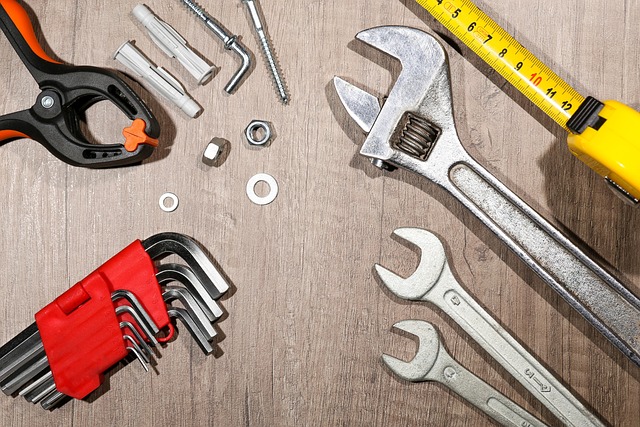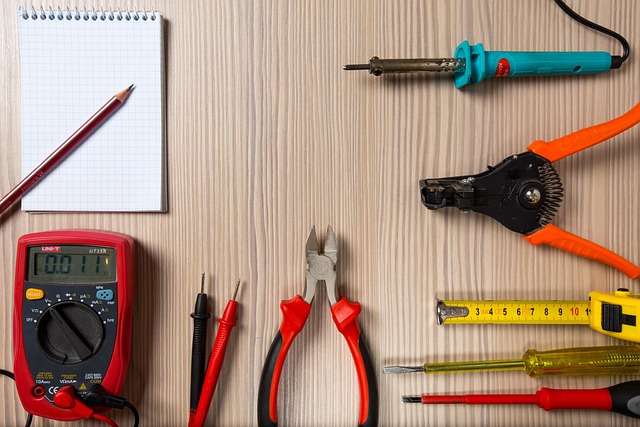Flat roofs pose unique challenges for leak detection and repair due to their complex structural components, including materials like asphalt or metal sheets over trusses, purlins, and decking. Common causes of leaks include aging roofing membranes, improper installation, inadequate drainage, temperature fluctuations, and wind damage. Modern technological advancements like infrared cameras, thermal imaging, moisture meters, and drone-mounted cameras have revolutionized leak detection, making inspections more efficient and precise.
Expert flat roof leak detection involves a combination of visual inspections using specialized tools and meticulous analysis of edges, vents, and drains for proper sealing. Infrared thermal imaging and Radio Frequency (RF) technology offer non-invasive solutions, swiftly identifying subtle temperature changes and leaks in hard-to-reach areas.
Swift action is crucial when suspecting a flat roof leak, with professional assistance recommended for complex issues or extensive damage. Regular maintenance, including routine inspections and gutter cleaning, plus efficient drainage systems, help extend the lifespan of flat roofs and prevent costly repairs. Advanced techniques like thermal imaging have proven successful in identifying subtle leaks, ensuring structural integrity and minimizing interior damage.
“Uncover the secrets behind expert flat roof leak detection with our comprehensive guide. This article delves into the intricate world of roofing, offering a detailed primer on identifying and rectifying leaks in flat structures. From understanding structural nuances to employing modern technologies like infrared thermal imaging and RF technology, we explore effective methods for early detection. Learn about common causes, visual inspection tips, and when to seek professional flat roof repair services. Discover preventive measures to ensure the longevity of your roof.”
Understanding Flat Roof Structures: A Primer for Leak Detection

Flat roofs, despite their simplicity in design, pose unique challenges when it comes to leak detection and repair. Understanding the structural components is crucial for effective troubleshooting. These roofs typically consist of a flat or slightly inclined surface, covered with various materials like asphalt, rubber, or metal sheets. Beneath these layers lies a complex network of support structures, including trusses, purlins, and decking. Any damage or disruption in this system can create entry points for water, leading to leaks.
Leak detection on flat roofs often involves meticulous inspection and diagnostic techniques. Professional roofers employ specialized tools and methods to identify the source of moisture intrusion. By tracing the path of water from visible stains to their origin, they can pinpoint weak spots or defects that require repair. Regular maintenance and early intervention in flat roof repairs are key to preventing widespread damage caused by persistent leaks.
Common Causes of Flat Roof Leaks: Identifying the Culprits

Flat roof leaks can be frustrating and costly to fix, but understanding their common causes is the first step in efficient leak detection and prompt flat roof repair. One of the primary culprits is aging and damage to the roofing membrane, which over time can weaken, crack, or become punctured by debris or extreme weather conditions. Another frequent issue arises from poor installation or craftsmanship, including improper flashing around vents or drains, weak sealants, or incorrect placement of membranes.
Inadequate drainage systems are also a significant factor. Clogged gutters or downspouts can lead to water pooling on the roof, exerting pressure and causing leaks. Moreover, changes in temperature, particularly rapid transitions from hot to cold, can cause materials to expand and contract, leading to stress points that eventually give way. Wind damage, both from storms and consistent breezes, can also contribute to membrane tears or dislodged components.
Traditional Methods vs Modern Technologies for Leak Discovery

In the realm of flat roof repair, detecting leaks has evolved significantly from traditional methods to modern technologies. Historically, identifying leaks often involved time-consuming processes like visually inspecting each component by hand or relying on signs of damage or moisture accumulation. These methods required extensive manual labor and could miss subtle issues hidden beneath layers of protective materials.
Modern technologies have transformed flat roof leak detection into a more precise and efficient process. Advanced tools such as infrared cameras, thermal imaging, and moisture meters can quickly pinpoint areas with temperature anomalies or moisture content, revealing leaks that might be invisible to the naked eye. Drone technology equipped with high-resolution cameras also offers a comprehensive aerial view, making it easier to inspect large or hard-to-reach flat roofs. These modern approaches not only save time but also enhance accuracy, ensuring that every nook and cranny is thoroughly examined during the leak detection process.
Visual Inspection Techniques: What to Look For on a Flat Roof

A thorough visual inspection is the first step in expert flat roof leak detection. Skilled professionals use a combination of specialized tools and meticulous observation to identify potential problem areas. During this process, they look for telltale signs like visible damage, such as missing or damaged shingles, flashing, or membranes. Cracks, holes, or any anomalies in the roof’s surface are also indicators that require immediate attention. Moreover, professionals scrutinize the roof’s edges, vents, and drains for proper sealing, as these areas are common leak points.
Beyond physical damage, experts check for signs of moisture intrusion or water stains below the roof surface. Even subtle indications of a previous repair can hint at ongoing issues. By utilizing torches, cameras, and infrared technology, professionals can peer beyond the visible to uncover potential leaks hidden within the flat roof’s complex structure, ensuring accurate diagnosis and effective flat roof repair solutions.
The Role of Infrared Thermal Imaging in Efficient Leak Detection

Infrared thermal imaging is transforming the way flat roof leaks are detected, offering an efficient and non-invasive method for professionals in the roofing industry. This technology captures and visualizes heat patterns on a roof’s surface, allowing experts to identify subtle temperature variations that indicate potential leak points. By comparing images taken before and after rainfall, roofers can pinpoint exact locations of water intrusion, even in hard-to-reach areas.
Infrared cameras detect heat signatures, making it possible to see through various materials commonly used in flat roof construction. This capability enables faster and more accurate diagnosis of leaks, reducing the time and cost associated with traditional leak detection methods. As a result, infrared thermal imaging plays a crucial role in streamlining flat roof repair processes, ensuring timely resolution and minimizing damage caused by prolonged water exposure.
Radio Frequency (RF) Technology: Uncovering Leaks in Hard-to-Reach Areas

Radio Frequency (RF) technology has emerged as a powerful tool in the realm of flat roof leak detection, offering a non-invasive and highly effective solution for professionals. This advanced method allows experts to uncover leaks in hard-to-reach areas with precision, making it an invaluable asset for flat roof repairs. By sending radio waves across the roof’s surface, RF technology can identify even the smallest discrepancies or gaps that might indicate a leak point.
The process is both efficient and detailed, enabling technicians to quickly pinpoint problem areas without causing any damage to the roof structure. This early detection not only saves time but also prevents further complications, ensuring long-lasting protection for the building below. With RF technology, flat roof repairs become more accurate, targeted, and less disruptive to the surrounding space.
When to Call in the Professionals for Flat Roof Repair

If you have a suspected flat roof leak, it’s crucial to act swiftly. While some minor leaks can be temporarily patched by homeowners, professional assistance should be sought when the issue becomes more complex or if there are signs of extensive damage. Flat roof repairs can be intricate due to their unique design and materials used. Professionals are equipped with specialized tools and expertise to navigate these challenges effectively.
Calling in experts for flat roof repair is recommended when you notice multiple leaks, significant water damage inside the building, large areas of damaged or missing shingles, or if the leak persists despite initial DIY attempts at repair. Timely intervention from professionals can prevent further complications, save on costly repairs in the long run, and ensure your home’s structural integrity.
Preventive Measures: Ensuring Longevity of Your Flat Roof

Regular maintenance is key to extending the lifespan of your flat roof. One of the best preventive measures is conducting routine inspections, especially after extreme weather events or seasons known for high precipitation. By doing so, you can catch any potential issues early on, such as missing shingles, damaged flashing, or signs of water intrusion.
Additionally, keeping your roof’s drainage system clear and efficient is crucial. Clogged gutters and downspouts can lead to water pooling, increasing the risk of leaks. Regular cleaning and maintenance ensure proper water flow, relieving pressure on the roofing material and reducing the chances of a flat roof repair.
Case Studies: Successful Flat Roof Leak Detection and Repair

In the realm of flat roof maintenance, successful leak detection and repair are paramount to ensuring structural integrity and preventing costly damage. Case studies illustrate the effectiveness of advanced techniques employed by experts in this field. For instance, consider a scenario where a commercial building faced recurrent water intrusion despite regular visual inspections. An experienced roofer utilized thermal imaging cameras to uncover a subtle leak hidden beneath the surface, allowing for precise repair and minimizing further harm.
Another compelling case involves a residential property with an aged flat roof. Through meticulous detection methods, including infrared technology and moisture analysis, professionals identified multiple points of leakage. Prompt repair not only saved the homeowners from extensive interior damage but also extended the life of their roof. These examples highlight the importance of professional expertise in flat roof leak detection, ultimately ensuring peace of mind for property owners.
